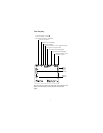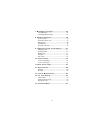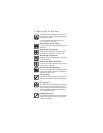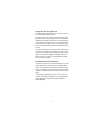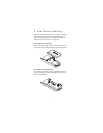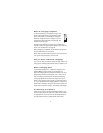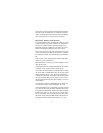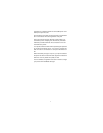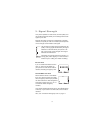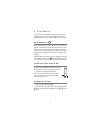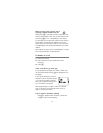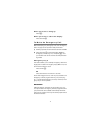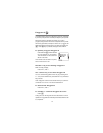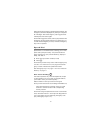6
Your battery can be charged and discharged hundreds of
times but it will eventually wear out. When the operating
time is noticeably shorter than normal, and reconditioning
fails to extend its life, its time to buy a new battery.
Important battery information
For good operation times, discharge the battery from time
to time by leaving your phone switched on until it turns it-
self off or by using the battery discharge facility of any
approved accessory available for your phone. Do not at-
tempt to discharge the battery by any other means.
When a charger is not in use, disconnect it from the power
source. Do not leave the battery connected to a charger
for longer than a week, since overcharging may shorten its
life.
If left unused, a fully charged battery will discharge itself
over time at room temperature.
When the battery is not in use, store it uncharged in a cool,
dark and dry place.
Temperature extremes will affect the ability of your battery
to charge: it may require cooling or warming first.
Do not short circuit the battery. Accidental short-circuiting
can occur when a metallic object (coin, clip, or pen) causes
direct connection of the + and - terminals of the battery
(metal strips on the back of the battery), for example, when
you carry a spare battery in your pocket or purse. Short
circuiting the terminal may damage the battery or the con-
necting object.
Use the battery only for its intended purpose. Never use
any charger or battery that is damaged or worn out.
Leaving the battery in hot or cold places, such as in a closed
car in summer or winter conditions, will reduce the capac-
ity and lifetime of the battery. Always try to keep the battery
between 59°F and 77°F (15°C and 25°C). A phone with a
hot or cold battery may temporarily not work, even when
the battery is fully charged. NiMH battery performance is
particularly limited in temperatures below 14°F (-10°C).



